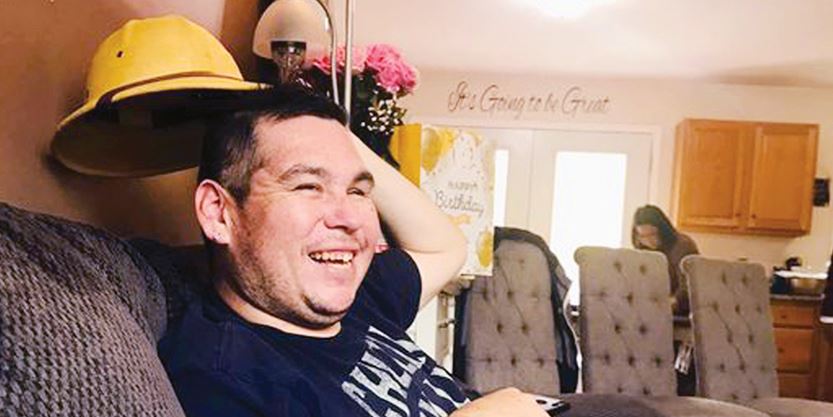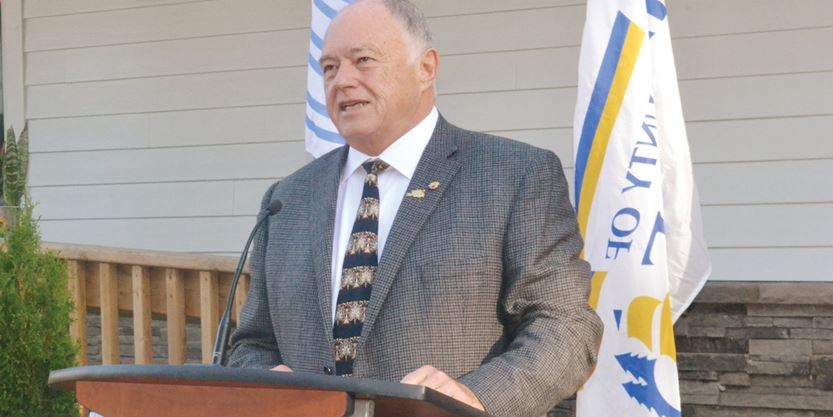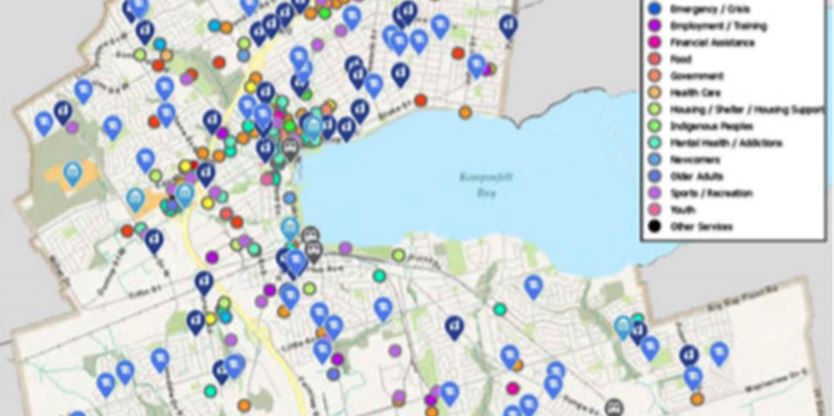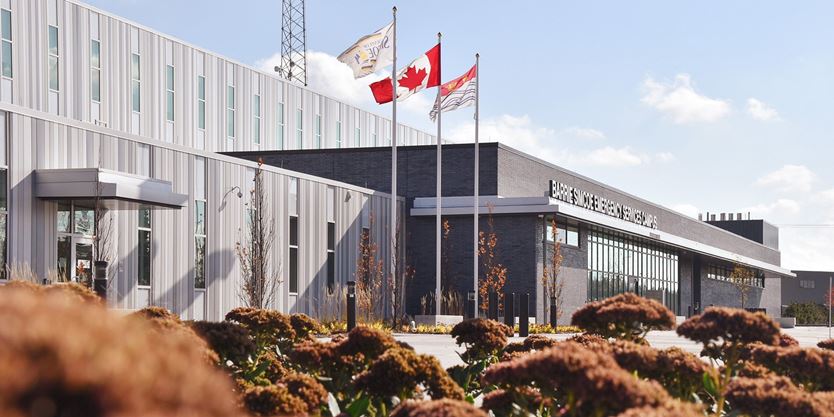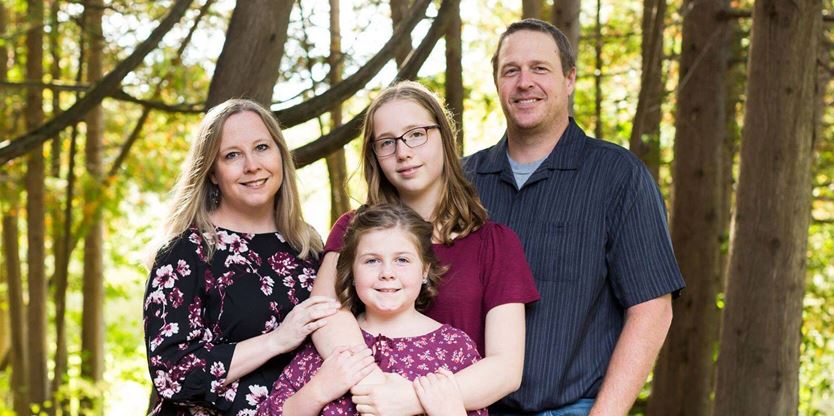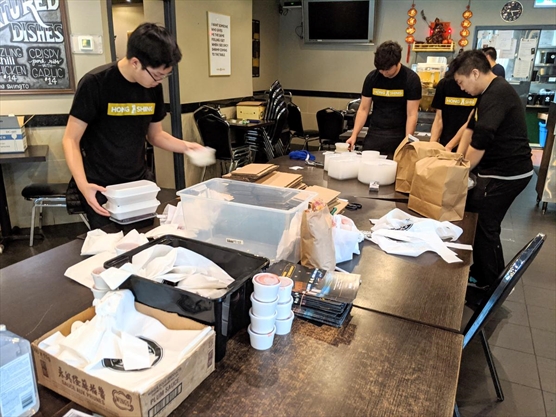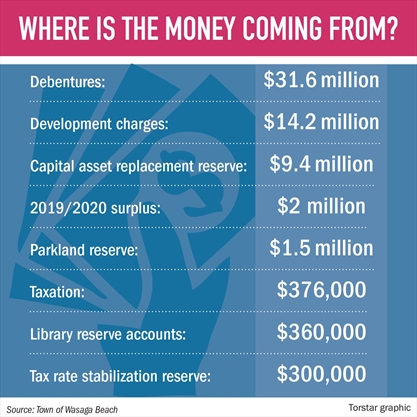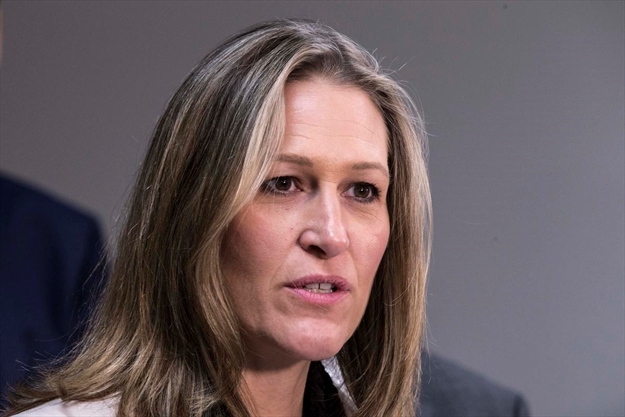The latest news from Canada and around the world Friday. This file will be updated throughout the day. Web links to longer stories if available.
7:06 p.m. There have been 287,228 confirmed cases of COVID-19 in Canada, of which 230,646 have been resolved and 10,828 are deaths, according to The Canadian Press.
This breaks down as follows (NOTE: The Star does its own count for Ontario; see elsewhere this file.):
- Quebec: 121,195 confirmed (including 6,586 deaths, 102,569 resolved)
- Ontario: 91,180 confirmed (including 3,312 deaths, 76,238 resolved)
- Alberta: 37,312 confirmed (including 398 deaths, 28,321 resolved)
- British Columbia: 20,895 confirmed (including 290 deaths, 14,901 resolved)
- Manitoba: 10,216 confirmed (including 137 deaths, 3,772 resolved)
- Saskatchewan: 4,513 confirmed (including 29 deaths, 3,057 resolved)
- Nova Scotia: 1,136 confirmed (including 65 deaths, 1,052 resolved)
- New Brunswick: 358 confirmed (including six deaths, 338 resolved)
- Newfoundland and Labrador: 299 confirmed (including four deaths, 289 resolved)
- Prince Edward Island: 68 confirmed (including 64 resolved)
- Yukon: 24 confirmed (including one death, 22 resolved)
- Northwest Territories: 15 confirmed (including 10 resolved)
- Repatriated Canadians account for 13 confirmed cases, all of which have been resolved
4:26 p.m. In a coronavirus briefing, President Donald Trump said the Food and Drug Administration will apply an Emergency Use Authorization for Pfizer’s vaccine for treating COVID-19, which is said to be 90 per cent effective. Trump said he had concluded, in July, a $1.95-billion agreement with the pharmaceutical manufacturer to supply 100 million doses initially, plus an additional 600 million doses. The vaccine will be free of charge.
2:45 p.m. Ontario is lowering the thresholds for imposing stricter COVID-19 measures under its colour-coded framework in light of what Premier Doug Ford calls “alarming” new projections.
The move comes in the wake of a Star story revealing he rejected advice from Public Health Ontario to make them stringent.
The changes mean several regions — including Hamilton, Halton, Toronto, Peel and York — will move to the red alert level, the most restrictive short of a lockdown. Residents in these regions are asked to stay home except for essential trips.
The lower thresholds will take effect Monday, except for Toronto, which was already set to move to the red alert level Saturday. Peel is already in the red zone.
Moving into the orange or “restiction” stage: Brant, Durham, Eastern Ontario, Niagara, Ottawa, Waterloo and Wellington-Dufferin-Guelph.
Ford warned the most recent modelling shows the province is “staring down the barrel of another lockdown.”
The move comes a day after health authorities unveiled new projections that showed the province is on track to see 6,500 new daily COVID-19 cases by the middle of next month.
Ontario is reporting 1,396 new cases of COVID-19 today, with 17 deaths related to the virus.
The move also comes following this week which reported that the province rejected its own public health agency’s advice when it launched its colour-coded plan for COVID-19 restrictions.
2:30 p.m.: Sources tell the Toronto Star that both Halton and Hamilton will move into the “control” or red stage of COVID-19 restrictions. Benchmarks also changing to be more stringent.
Fridays are now the day where Premier Doug Ford announces which health units are moving up on the scale of severity in his controversial new colour-coded, five-stage framework for escalating action against COVID-19 that has been widely criticized for easing thresholds for restrictions on businesses and activities.
Ontario’s cases continue to be concentrated in the GTA but more infections are being reported in other parts of the provinces as the virus spreads.
Toronto and Peel each had 440 new infections, York 155, Halton 55 and Durham 41. There were 91 in Ottawa.
2:15 p.m.: New Brunswick is reporting two new cases of COVID, bringing the province’s total to 20.
The cases include one person in their 20s in the Moncton area and one person under 20 in the Saint John area.
Both cases are under investigation and the individuals are self isolating.
There are 20 active cases in New Brunswick.
2:04 p.m.: President Donald Trump, who has remained mostly holed up in the White House this week as he stews over his election loss, on Operation Warp Speed, the effort to get a coronavirus vaccine to market as speedily and safely as possible.
Trump, who was briefed by advisers in the Oval Office earlier Friday, will speak at 4 p.m. from the Rose Garden, according to the White House. It will be the first time the president addresses the White House press corps in more than a week.
Trump has been largely disengaged from the battle against COVID-19 at a moment when the disease is tearing across the United States at an alarming pace.
2 p.m.: Another case of COVID-19 has been confirmed in western Nunavut to add to the territory’s three other infections.
It’s prompted the chief public health officer to close the Kivalliq region’s schools, make masks mandatory in public and restrict flights starting Sunday.
Dr. Michael Patterson says an Arviat resident returned to the town of about 2,600 earlier this month after spending 14 days in mandatory isolation in a Winnipeg hotel.
Seven days after returning home, the person became ill and was medevaced to Winnipeg, where a COVID-19 test came back positive.
Patterson says an earlier positive case in Rankin Inlet, also in the Kivalliq region, completed isolation in Winnipeg as well and has a similar travel history to the Arviat case.
He says the common travel history is concerning, but it’s not yet certain how the two were exposed to the novel coronavirus after isolating.
Nunavut had been free of COVID-19 throughout the pandemic until two weeks ago.
In the neighbouring Northwest Territories, four more cases of the illness have been confirmed — all related to the same household in Fort Smith.
A statement from the N.W.T.’s chief public health officer, Kami Kondala, says all contacts have been identified and there is no risk to the public.
The N.W.T. has had a total of 15 cases, five of which are active.
1:53 p.m.: The frequent roar of motorcycles drowned out warnings from politicians who had called on bikers to to this otherwise sleepy Lake Erie town because of the COVID-19 pandemic.
The normal crowds, however, which number in the tens of thousands and take over the town, were sharply diminished. Those who did brave the chilly, partially overcast conditions to make the trek, many wearing masks, said they would respect social distancing and other anti-pandemic measures.
1:50 p.m. Puerto Rico’s governor announced Friday that she will activate the National Guard to help enforce a curfew aimed at curbing a rise in COVID-19 cases and other measures. including once again closing beaches to everyone except those doing exercise.
Gov. Wanda Vázquez also said the government will limit capacity at restaurants, casinos, gyms, churches and other places to 30 per cent.
The new restrictions start Nov. 16 and will remain in place until Dec. 11. Face masks and a 10 p.m. to 5 a.m. curfew remain mandatory.
“We will not under any circumstance allow our health system to be placed at risk,” she said. “There are many who have lowered their guard and have not understood that this pandemic is still with us.”
Vázquez also urged people across Puerto Rico to be extremely cautious during the holiday season, encouraging families to get together via Zoom. She said that if violations continue into mid-December, she would close down more businesses and implement more restrictive measures.
The island of 3.2 million people has reported more than 40,500 confirmed cases, more than 35,400 suspected ones and more than 900 deaths.
The new measures come as Puerto Rico struggles to recover from hurricanes, earthquakes and an economic and financial crisis that began more than a decade ago.
1:42 p.m. Peel Region officials are asking residents to this weekend.
The advisories come as the region announced 440 new COVID-19 cases today, the same as neighbouring Toronto.
Dr. Lawrence Loh, Peel’s medical officer of health, says that while there aren’t any public health concerns with Diwali itself, the public health concern is with large gatherings, which may be involved in Diwali celebrations.
Loh says that Peel residents should limit close contacts to only people they live with and only meet anyone outside of their household for “the most essential reasons.”
Brampton, Ont. Mayor Patrick Brown said yesterday that Diwali and Bandi Chhor Divas, which will be celebrated largely by South Asian and Hindu communities tomorrow, is an event he’s “got a lot of concern over.”
A census of the region found that South Asians account for more than half of Brampton’s population.
Brown says the event is a concern because the region saw a spike of cases related to Thanksgiving and is beginning to see a spike of cases linked to Halloween.
1:35 p.m.: Manitoba is reporting 437 new COVID-19 cases and five additional deaths today.
New restrictions were imposed across the province yesterday that require many non-essential businesses to close.
The province’s chief public health officer is advising people to stay home as much as possible and to not socialize with people from outside their household
12:48 p.m.: Newfoundland and Labrador has one new case of COVID-19, with a total of six active cases in the province.
The one new confirmed case is a man in his 20s and is travel-related.
The Newfoundland and Labrador resident returned to the central region of the province from Ontario.
Contact tracing by public health officials is underway, and anyone considered a close contact has been advised to quarantine.
12:40 p.m.: The government of Saskatchewan is expanding its mandatory mask rule and putting a curfew on alcohol sales for 28 days in an attempt to curb the spread of COVID-19.
The Ministry of Health says starting Monday, masks must be worn in all indoor public spaces in communities where 5,000 or more people live.
Masks are currently mandatory in indoor public spaces in Regina, Saskatoon and Prince Albert.
Also starting Monday, restaurants and bars will have to stop selling alcohol at 10 p.m.
12:35 p.m.: Prime Minister Justin Trudeau says the federal government to the provinces and territories to help Canadians in hard-hit industries.
Trudeau says the funding will help laid-off workers in sectors like construction, transportation and hospitality re-enter the workforce by bolstering access to skills training and employment services.
The money comes at a critical time, with a new survey from Statistics Canada finding nearly one-third of businesses do not know how long they can keep going under existing conditions brought by the second wave of COVID-19.
Nearly 40 per cent of businesses have laid off staff since March, and nearly one in five report they will be compelled to take drastic action in less than six months if cash flow does not improve.
Canadian Chamber of Commerce chief economist Trevin Stratton says the outlook for business owners is grim, and is calling for sector-specific support to help the hospitality and arts and entertainment industries.
A revamped COVID-19 aid package now before the Senate would extend a federal wage subsidy until next summer, expand a popular business loan program and redo a plan for commercial rent relief.
12:20 p.m.: Health officials say they have found issues with protective equipment, staffing and the tracking of resident feeding at a personal care home in Winnipeg that called in paramedics last weekend.
The Winnipeg Regional Health Authority says their ongoing review of the Maples Personal Care Home has found breaches of rules related to personal protective equipment.
The authority also says the home did not properly maintain documentation about the feeding and hydration of residents. At least 106 residents at Maples, owned by Revera, have tested positive for COVID-19 since the pandemic began and 22 have died.
12:09 p.m.: Canada’s chief public health officer says the country is projected to hit 10,000 new COVID-19 cases a day by early next month if the spread of virus continues at its current pace.
Dr. Theresa Tam says there are 45,000 active cases across the country.
Tam says public health labs tested an average of close to 55,000 people daily over the past week and six per cent test positive.
She says the number of severe cases continues to rise, with an average daily increase of 1,400 hospitalizations, including 280 in critical care, over the past seven days.
11:55 a.m.: Prime Minister Justin Trudeau says he’s told premiers that while his government will always be there to help, federal resources are not “infinite.”
Trudeau says he’s heard from premiers about the challenges they’re facing, but he says making tough choices now will reduce the chance of facing “impossible decisions” later.
He says his government is committed to collaborating on the distribution of a potential vaccine, though the fight against COVID-19 is far from over.
Trudeau says Canada reached a new daily high of 5,000 new COVID-19 cases yesterday.
11:46 a.m.: A new survey from Statistics Canada finds nearly one-third of businesses do not know how long they can continue under existing conditions brought by the second wave of COVID-19.
The survey says 30 per cent of Canadian businesses are unsure if they can keep operating at their current level without considering layoffs, closure or bankruptcy, with nearly one in five reporting they would be compelled to take drastic action in less than six months.
Nearly 40 per cent of businesses have laid off staff since March, but three-quarters expect to retain the same number of employees over the next three months.
Canadian Chamber of Commerce chief economist Trevin Stratton says the outlook for business owners is grim, and is calling for sector-specific support to help the hospitality and arts and entertainment industries.
A revamped COVID-19 aid package now before the Senate would extend a federal wage subsidy until next summer, expand a popular business loan program and redo a plan for commercial rent relief.
11:30 a.m.: Quebec is reporting 1,301 new cases of COVID-19 and 30 more deaths attributed to the novel coronavirus, nine of which occurred in the past 24 hours.
Health officials say the number of hospitalizations remained stable at 583, and that 85 people were in intensive care, a drop of one.
A government-funded health institute called the INESSS said today it didn’t expect COVID-related hospitalizations to exceed dedicated capacity in the health network over the next four weeks.
It warned, however, the number of COVID-19 cases among people over 70 years old and those who have underlying health conditions is rising.
Quebec has reported a total of 121,195 infections, 102,569 recoveries, and 6,586 deaths linked to the virus.
Authorities say one death previously attributed to COVID-19 has been determined to be unrelated.
11:23 a.m.: Health officials in Nova Scotia have identified two new cases of COVID-19.
That brings the province’s total number of active cases to 19.
One of the new cases is in the province’s northern zone and is related to travel outside of Atlantic Canada.
The other case is in the central zone and is under investigation, though officials say it is not linked to a recent cluster of cases reported in the west end of Halifax.
11:15 a.m.: The Canadian Medical Association is sounding the alarm about an impending “crisis” as the rising tide of COVID-19 cases pushes parts of the health-care system to near or full capacity.
The association says medical workers are getting “the short end of the stick” in the face of insufficient measures to slow the spread of the virus.
The doctors’ group says the health of Canadians must take precedence over economic concerns.
The association called on political leaders to implement “difficult but necessary” measures that public health officials have recommended
11 a.m.: Ontario is reporting an additional 116 new cases in public schools across the province, bringing the total in the last two weeks to 1,101 and 3,282 overall since school began.
, the province reported 56 more students were infected for a total of 637 in the last two weeks; since school began there have been an overall total of 1,850.
The data shows there are 13 more staff members infected for a total of 117 in the last two weeks — and an overall total of 410.
The latest report also shows 47 more infected individuals who weren’t identified for a total of 347 in that category in the last two weeks — and an overall total of 1,022.
There are 670 schools with a reported case, which the province notes is 13.9 per cent of the 4,828 public schools in Ontario.
One school is closed because of an outbreak. The data doesn’t identify that school or where it is.
There is a lag between the daily provincial data at 10:30 a.m. and news reports about infections in schools. The provincial data on Friday is current as of 2 p.m. Thursday. It doesn’t indicate where the place of transmission occurred.
The Toronto District School Board updates its information on current COVID-19 cases throughout the day . As of 10 a.m. Friday, there were 229 TDSB schools with at least one active and/or resolved case — 301 students, 71 staff and 82 resolved cases.
The Toronto Catholic District School Board also updates its information . As of Friday at 7:55 a.m., there were 123 schools with at least one active/resolved case — 116 students and 18 staff.
Epidemiologists have that the rising numbers in the schools aren’t a surprise, and that the cases will be proportionate to the amount of COVID that is in the community.
10:40 a.m. Liverpool striker Mohamed Salah has tested positive for the coronavirus. The announcement was made by the Egyptian soccer association on Twitter ahead of Saturday’s game against Togo.
10:27 a.m.: Two months after the City of Ottawa scrambled to expand its COVID-19 testing options to deal with a massive spike in demand, it is now set to because far fewer people are showing up for swabs.
, with average daily testing numbers down more than 25 per cent compared to a month ago, even as positive cases soar.
On Oct. 15, the Public Health Agency of Canada reported an average of 77,000 COVID-19 tests had been completed each day over the previous week, the highest it had ever been. That fell to an average daily count of 61,000 a week ago, and to below 55,000 this week.
In mid-October, Canada had about 2,300 new cases of COVID-19 diagnosed each day. This week, that number grew to above 4,000.
Ontario, which on Thursday recorded its fifth record case total in the last six days, was aiming to have 68,000 tests daily by the middle of November. It hasn’t hit 40,000 tests once in those six days, and twice dropped below 30,000 tests per day.
The province averaged 38,273 tests per day in October, and this month so far the daily average is 33,870.
British Columbia averaged 9,369 tests last month. So far in November the average daily test count is 9,101.
10:09 a.m. (updated) Ontario is reporting another 1,396 new cases Friday. The seven-day average is up by 56 to a new high of 1,355 cases/day or 65 cases weekly per 100,000.
There were 19 more deaths brings that seven-day average to a second-wave high of 14.7/day.
There are 452 people in hospital due to COVID-19, 106 in intensive care, and 67 on ventilators.
Health Minister Christine Elliott says there are 440 new cases in Toronto, 440 in Peel and 155 in York Region.
Elliott also says there are 1,018 more resolved cases and 40,509 tests completed.
Premier Doug Ford will be joined by Minister of Health Christine Elliott and Dr. David Williams to make an announcement at 2:30 p.m. at Queen’s Park.
9:30 a.m.: Microsoft said it has detected attempts by state-backed Russian and North Korean hackers to steal valuable data from leading pharmaceutical companies and vaccine researchers.
It said in a blog post Friday that most of the attacks in recent months were unsuccessful, but provided no information on how many succeeded or how serious those breaches were.
Chinese state-backed hackers have also been targeting vaccine-makers, the U.S. government said in July while announcing criminal charges.
Microsoft said most of the targets — located in Canada, France, India, South Korea and the United States — were “directly involved in researching vaccines and treatments for COVID-19.” It did not name the targets but said most had vaccine candidates in various stages of clinical trials.
The company identified one of the state-backed hacker groups as Fancy Bear, the Russian military agents who Britain’s National Cyber Security Center said in July were behind such intrusion attempts. Two others were North Korea’s Lazarus Group and a group Microsoft calls Cerium.
Most of the break-in efforts involved attempts to steal the login credentials of people associated with the targeted organizations. The Lazarus Group posed as job recruiters while Cerium targeted spear-phishing emails that masqueraded as missives from World Health Organization representatives, Microsoft said.
8:43 a.m. that Ontario rejected its own public health agency’s advice when it launched its colour-coded plan for restrictions.
Health Minister Christine Elliott told reporters Friday that the framework was “designed after full consultation and advice” from two expert advisory groups. But one group told the Star it was never consulted, and a member of the other group said she never saw the final plan before it was released.
The bombshell report sparked outrage across the province, and many Ontarians are looking for answers.
Star reporters Jennifer Yang and Kate Allen, who , will answer your questions about the new COVID-19 framework .
8:41 a.m. The Ontario Provincial Police anti-rackets squad is investigating a Ministry of Education employee after tens of thousands of dollars was pilfered from relief funds for families.
Senior Progressive Conservative officials told the Star that as many as 400 phony payments of $200 and $250 were siphoned to fake addresses.
That suggests that as much as $100,000 could have been stolen.
“It’s significant,” said a high-ranking insider, who spoke on background in order discuss a sensitive matter.
“But the good news is the theft was detected quickly and police called,” said the insider.
8:09 a.m. Cineplex says its sales this summer were more than 85 per cent lower than summer 2019, as the COVID-19 pandemic contributed to a 91 per cent drop in movie-goers.
The Toronto-based theater chain says it ended the third quarter with a net loss of $121.2 million, or $1.91 per share, whereas this time last year, Cineplex had turned a profit of $13.4 million, or 21 cents per share.
The company says it had revenue of $61 million in the three months ending Sept. 30, down from $418.4 million during the same period in 2019.
Analysts surveyed by Refinitiv expected Cineplex to lose $57.3 million, or $1.31 per share, on revenue of nearly $75.2 million.
Cineplex re-opened its full chain of theaters with limited show times and seating on Aug. 21, but was able to draw only 1.6 million people to theaters during the quarter, down from 17.5 million last summer, even with the release of the much-anticipated movie, Tenet.
8 a.m. In Quebec, Premier Francois Legault says he is considering temporarily closing schools to reduce COVID-19 transmission.
Legault says 1,174 classrooms across the province are currently closed, but most alarming was that 324 of them had been shut in the last two days.
And new public health measures are to come into effect today in Alberta, where cases continue to climb.
Indoor group sports and fitness classes in major centres are to be stopped for two-weeks, along with amateur singing, dancing and theatre groups.
Bars, lounges and pubs must stop serving alcohol by 10 p.m. and close at 11 p.m. in certain hard-hit areas and the government is “strongly recommending” there be no social gatherings in homes.
7:32 a.m. The Swedish soccer federation says defender Carl Starfelt has tested positive for the coronavirus. Team doctor Anders Valentin says Starfelt is “doing well” and has been isolated in his hotel room. Sweden is scheduled to play Croatia in Stockholm on Saturday.
7:31 a.m. The Norwegian soccer federation has cancelled training after an unnamed player tested positive for the coronavirus.The federation says the player has been put in quarantine. Norway is scheduled to play Romania in Bucharest on Sunday in the Nations League.
6:06 a.m.: School systems in Detroit, Indianapolis, Philadelphia and suburban Minneapolis are giving up on in-person classes, and some governors are reimposing restrictions on bars and restaurants or getting more serious about masks, as the coast-to-coast resurgence of the coronavirus sends deaths, hospitalizations and new infections soaring.
The crisis deepened at hospitals, with the situation so bad in North Dakota that the governor this week said nurses who test positive but have no symptoms can still work. Idaho clinics struggled to handle the deluge of phone calls from patients. And one of Utah’s biggest hospital systems is bringing in nearly 200 travelling nurses, some of them from New York City.
The virus is blamed for more than 242,000 deaths and over 10.5 million confirmed infections in the U.S., with the country facing what health experts say will be a dark winter because of disregard for mask-wearing and other precautions, the onset of cold weather and crowded holiday gatherings
6:02 a.m.: Over the past eight months, Claudio Martins’ world has gotten smaller.
Martins, who is 82 and looks younger, has been careful to follow public health guidelines. He wears a mask, limits the people he sees and keeps his trips out to the pharmacy or the bank. The hardest thing is not being able to visit his wife, who lives in a nursing home.
So he reads, listens to music and spends time in the yard of his home in Toronto’s Little Italy. He said he’s long believed that age is just a number and that you have to take care of yourself.
“You have to be patient. You have to accept the situation, you know what I mean?” he says.
“But it’s hard. No doubt about that.”
There’s no question that seniors have borne the brunt of the coronavirus pandemic. More than 80 per cent of COVID-19 deaths worldwide have been in those older than 65.
6:01 a.m.: Long stretches of Lawrence Avenue East in Scarborough from Kennedy Road to Morningside Avenue are dotted with small mom and pop shops. There are restaurants and clothing shops, service businesses and convenience stores. In many cases, these businesses are the primary source of income for the families who own them and do most — if not all — of the work to keep them up and running.
Before the COVID-19 pandemic, these strips of small businesses were bustling with movement. People coming and going, shopping and gathering to hang out. These days, however, foot traffic is noticeably less. Parking lots in front of the shops are half full, in some cases even less, especially now that eateries have stopped their indoor dining services amid the province’s modified Stage 2 restrictions and are relying on online orders and curbside pickups.
5:03 a.m.: Indonesia added the highest number of new coronavirus cases since the outbreak began, two weeks after a five-day weekend.
The country confirmed 5,444 new cases in the 24 hours through midday Friday, beating out the previous record in October to bring the total to 457,735, according to the health ministry. Some 104 people died from the disease over the same period, with the total at 15,037.
President Joko Widodo had called on his officials to ensure the public holiday period from Oct. 28 to 30 wouldn’t lead to a spike in virus cases as many Indonesians traveled domestically. The country is grappling with Southeast Asia’s largest outbreak, with the impact of the pandemic pushing the economy into its first technical recession since the Asian financial crisis.
The Central Java province accounted for 1,362 of the cases reported on Friday, followed by the capital Jakarta, which remains the epicenter of the outbreak in Indonesia, with 1,033
5 a.m.: Residents of Ontario’s for-profit long-term-care homes are still experiencing significantly worse outcomes — both cases and deaths — than those living in municipal or non-profit facilities, a Star analysis shows.
According to available data on Ontario’s second wave, the province’s long-term-care facilities are experiencing COVID-19 outbreaks at about the same rate, regardless of whether they’re run by for-profit corporations or not. But once the virus arrives, for-profit facilities have fared far worse — much as they did during the first wave of infections that swept through Ontario nursing homes in the spring, killing more than 1,800 people and prompting a provincial commission to examine the problem.
4:16 a.m.: In Ontario,, would put Ontario on track for 6,500 new cases a day by mid-December. Under a three per cent growth rate, it would be 2,500 cases daily.
The numbers mean Ontario might have to start cancelling planned surgeries.
In Quebec, Premier Francois Legault says he was considering temporarily closing schools to reduce COVID-19 transmission.
Legault says 1,174 classrooms across the province are currently closed, but most alarming was that 324 of them had been shut in the last two days.
And new public health measures were to come into effect today in Alberta, where cases continue to climb.
Indoor group sports and fitness classes in major centres are to be stopped for two-weeks, along with amateur singing, dancing and theatre groups.
Bars, lounges and pubs must stop serving alcohol by 10 p.m. and close at 11 p.m. in certain hard-hit areas and the government is “strongly recommending” there be no social gatherings in homes.
4:15 a.m.: Western Canadians tired of isolating at home are filling the slopes at mountain ski resorts that have opened earlier than usual thanks to abundant snow and cold temperatures and despite worries about surging cases of COVID-19.
Two Banff National Park resorts have had their earliest openings on record — 95-year-old Banff Norquay opened Oct. 24 and Lake Louise, about 40 years old in its current form, opened Oct. 29.
Nakiska Ski Area, about 100 kilometres west of Calgary, opened for weekend preview skiing last weekend (it goes seven days a week as of Nov. 27), and Sunshine Village Ski Resort near Banff opened on Monday.
4:13 a.m.: Kopenhagen Fur, the world’s largest auction house for furs, is closing down after Denmark’s government ordered a mass cull of the country’s mink in an effort to fight a coronavirus mutation.
The development marks the end of an era in Denmark, which was the world’s biggest producer of mink until last week. Prime Minister Mette Frederiksen stunned the industry on Nov. 4 when she told Danish mink farmers to start culling their herds. She said scientists had discovered a rare mutation of the coronavirus — cluster 5 — which had the potential to derail vaccine efforts.
The 90-year-old company still has enough pelts to hold auctions next year and possibly further into the future, but will start liquidating the business after that, according to a statement on its website.
4:03 a.m.: British Columbia’s top doctor.
Dr. Bonnie Henry says Santa Claus is “probably” immune to COVID-19, but Christmas will still look a little different this year.
She says health officials are trying to determine how they can facilitate Santa’s visits because he’s going to be washing his hands a lot and probably won’t be eating cookies and milk in every house, but they will find ways of making it work.
Henry says there won’t be a vaccine by Christmas to save the day, but people can do a number of small things to celebrate in a safe way, especially to protect elders.
She says the virus spreads more easily in cooler weather, particularly when people are inside, which is why it’s so important for people to reduce their contacts and step up their safety measures.
4:02 a.m.: Prime Minister Justin Trudeau will continue today to prod premiers towards more stringent measures to curb the spread of COVID-19, even as he offers up more federal funding to help provinces retrain workers left jobless by the pandemic.
Trudeau is expected to announce hundreds of millions of dollars more for provinces to plow into skills training, on top of some $3.5 billion in previously announced funding.
But he’s also expected to renew his call for premiers to impose the restrictions necessary to douse the wildfire spread of COVID-19 and not be deterred by the economic costs of shutting down businesses.
4:01 a.m.: Local and provincial officials are because of the COVID-19 pandemic.
Hordes of motorcyclists typically descend on the beach town every Friday the 13th, with provincial police regularly reporting upwards of 100,000 attendees.
The mayor of Norfolk County, where Port Dover is located, says she knows that the motorcycle rally is important to the community, but that going ahead with it would put the area at risk.
4 a.m.: The latest numbers of confirmed COVID-19 cases in Canada as of 7:01 p.m. EST on Nov. 12, 2020:
There are 282,577 confirmed cases in Canada.
_ Quebec: 119,894 confirmed (including 6,557 deaths, 101,407 resolved)
_ Ontario: 89,784 confirmed (including 3,293 deaths, 75,220 resolved)
_ Alberta: 36,405 confirmed (including 393 deaths, 27,707 resolved)
_ British Columbia: 20,368 confirmed (including 288 deaths, 14,089 resolved)
_ Manitoba: 9,782 confirmed (including 132 deaths, 3,620 resolved)
_ Saskatchewan: 4,437 confirmed (including 29 deaths, 2,949 resolved)
_ Nova Scotia: 1,134 confirmed (including 65 deaths, 1,049 resolved)
_ New Brunswick: 356 confirmed (including 6 deaths, 337 resolved)
_ Newfoundland and Labrador: 298 confirmed (including 4 deaths, 287 resolved)
_ Prince Edward Island: 68 confirmed (including 64 resolved)
_ Yukon: 24 confirmed (including 1 death, 22 resolved)
_ Repatriated Canadians: 13 confirmed (including 13 resolved)
_ Northwest Territories: 11 confirmed (including 10 resolved)
_ Nunavut: 3 confirmed
_ Total: 282,577 (0 presumptive, 282,577 confirmed including 10,768 deaths, 226,775 resolved)
3 a.m.: South Korea has reported its biggest daily jump in COVID-19 cases in 70 days as the government .
The 191 cases added to the country’s caseload Friday represented the sixth consecutive day of over 100 and the highest daily increase since Sept. 4 when authorities reported 198 new infections.
More than 120 of the cases were from the Seoul metropolitan area, where the coronavirus has spread in a variety of places, including hospitals, nursing homes, churches, schools, restaurants and offices.
1:15 a.m.: Once a coronavirus hot spot, Massachusetts was seen as a model for infection control this summer as coronavirus cases and deaths dwindled. Now, as its cases climb once again and confirmed deaths surpass 10,000.
Amid growing calls for action, Republican Gov. Charlie Baker recently tightened restrictions but has resisted taking more drastic measures such as halting indoor dining. The governor insists Massachusetts is better prepared than it was in the spring, but says if the trends continue it will only be a matter of time before the state’s hospitals are once again stressed under a flood of patients.
12:28 a.m: President Donald Trump has when the disease is tearing across the United States at an alarming pace.
Trump, fresh off his reelection loss to President-elect Joe Biden, remains angry that an announcement about progress in developing a vaccine for the disease came after Election Day. And aides say the president has shown little interest in the growing crisis even as new confirmed cases are skyrocketing and hospital intensive care units in parts of the country are nearing capacity.
Public health experts worry that Trump’s refusal to take aggressive action on the pandemic or to co-ordinate with the Biden team during the final two months of his presidency will only worsen the effects of the virus and hinder the nation’s ability to swiftly distribute a vaccine next year.
The White House coronavirus task force held its first post-election meeting Monday. Officials discussed the rising case numbers and the promise of a vaccine in development by Pfizer, and they recognized the service of Navy Rear Adm. John Polowczyk, a member of the task force who retired Monday.

